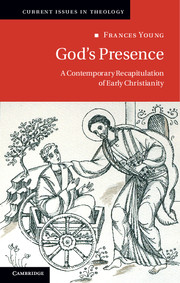Book contents
- Frontmatter
- Contents
- Preface
- Acknowledgements
- Abbreviations
- Introduction
- 1 From pondering scripture to the first principles of Christian theology
- 2 From cosmology to doxology: reading Genesis alongside Plato and Darwin
- 3 From creation to re-creation: nature and the naked ape
- 4 From image to likeness: incarnation and theōsis
- 5 From Adam and Eve to Mary and Christ: sin, redemption, atonement
- 6 From inspiration to sanctification: discerning the work of the Holy Spirit
- 7 From the church to Mary: towards a critical ecumenism
- 8 From dogma to theōria: the Christian God
- Epilogue
- Bibliography
- Index
- References
3 - From creation to re-creation: nature and the naked ape
Published online by Cambridge University Press: 05 June 2014
- Frontmatter
- Contents
- Preface
- Acknowledgements
- Abbreviations
- Introduction
- 1 From pondering scripture to the first principles of Christian theology
- 2 From cosmology to doxology: reading Genesis alongside Plato and Darwin
- 3 From creation to re-creation: nature and the naked ape
- 4 From image to likeness: incarnation and theōsis
- 5 From Adam and Eve to Mary and Christ: sin, redemption, atonement
- 6 From inspiration to sanctification: discerning the work of the Holy Spirit
- 7 From the church to Mary: towards a critical ecumenism
- 8 From dogma to theōria: the Christian God
- Epilogue
- Bibliography
- Index
- References
Summary
Prelude
The minister leads in the coffin, intoning the traditional texts:
I am the resurrection and the life, saith the Lord: he that believeth in me, though he were dead, yet shall he live: and whoso liveth and believeth in me shall never die.
We brought nothing into this world and it is certain we can carry nothing out. The Lord gave and the Lord hath taken away: blessed be the name of the Lord.
The grandmother is the first to hold the new-born infant in her arms. Gazing at the tiny face, she hears the child named with her own name, the maiden name of the baby's great-great-grandmother, a given name for four generations. She's awed by the continuities of generations, their dying and birthing.
The cyclists crash down the gears and pedal fast up the steep little rise, eyes caught by the dark mist of bluebells in the wood glimpsed through the hedge. On the way they've heard the squawk of a pheasant, birds chattering in woods and larks singing above fields; they've seen a meadow of cowslips, ramsons in verges, primroses on banks, blackthorn in hedges, delicate carpets of wood anemones and the purple faces of violets. Exercise induces deep breathing, a racing pulse and the biochemistry of euphoria; the sheer physical joy of living produces insistent beats of heartfelt praise – earthed in belonging to the natural order.
- Type
- Chapter
- Information
- God's PresenceA Contemporary Recapitulation of Early Christianity, pp. 92 - 145Publisher: Cambridge University PressPrint publication year: 2013
References
- 1
- Cited by



